Norena Shopland - A History of Women in Mens Clothes
Here you can read online Norena Shopland - A History of Women in Mens Clothes full text of the book (entire story) in english for free. Download pdf and epub, get meaning, cover and reviews about this ebook. year: 2021, publisher: Casemate Publishers & Book Distributors, LLC, genre: Science fiction. Description of the work, (preface) as well as reviews are available. Best literature library LitArk.com created for fans of good reading and offers a wide selection of genres:
Romance novel
Science fiction
Adventure
Detective
Science
History
Home and family
Prose
Art
Politics
Computer
Non-fiction
Religion
Business
Children
Humor
Choose a favorite category and find really read worthwhile books. Enjoy immersion in the world of imagination, feel the emotions of the characters or learn something new for yourself, make an fascinating discovery.
- Book:A History of Women in Mens Clothes
- Author:
- Publisher:Casemate Publishers & Book Distributors, LLC
- Genre:
- Year:2021
- Rating:3 / 5
- Favourites:Add to favourites
- Your mark:
- 60
- 1
- 2
- 3
- 4
- 5
A History of Women in Mens Clothes: summary, description and annotation
We offer to read an annotation, description, summary or preface (depends on what the author of the book "A History of Women in Mens Clothes" wrote himself). If you haven't found the necessary information about the book — write in the comments, we will try to find it.
A History of Women in Mens Clothes — read online for free the complete book (whole text) full work
Below is the text of the book, divided by pages. System saving the place of the last page read, allows you to conveniently read the book "A History of Women in Mens Clothes" online for free, without having to search again every time where you left off. Put a bookmark, and you can go to the page where you finished reading at any time.
Font size:
Interval:
Bookmark:

A History of Women in Mens Clothes
In loving memory of my mother Pamela Shopland and all those who lost their lives to Coronavirus in 2020.
From Cross-Dressing to Empowerment
Norena Shopland

First published in Great Britain in 2021 by
Pen & Sword History
An imprint of Pen & Sword Books Ltd
Yorkshire Philadelphia
Copyright Norena Shopland 2021
ISBN 978 1 52678 767 5
ePUB ISBN 978 1 52678 768 2
Mobi ISBN 978 1 52678 769 9
The right of Norena Shopland to be identified as Author of this work has been asserted by her in accordance with the Copyright, Designs and Patents Act 1988.
A CIP catalogue record for this book is available from the British Library.
All rights reserved. No part of this book may be reproduced or transmitted in any form or by any means, electronic or mechanical including photocopying, recording or by any information storage and retrieval system, without permission from the Publisher in writing.
Pen & Sword Books Limited incorporates the imprints of Atlas, Archaeology, Aviation, Discovery, Family History, Fiction, History, Maritime, Military, Military Classics, Politics, Select, Transport, True Crime, Air World, Frontline Publishing, Leo Cooper, Remember When, Seaforth Publishing, The Praetorian Press, Wharncliffe Local History, Wharncliffe Transport, Wharncliffe True Crime and White Owl.
For a complete list of Pen & Sword titles please contact
PEN & SWORD BOOKS LIMITED
47 Church Street, Barnsley, South Yorkshire, S70 2AS, England
E-mail:
Website: www.pen-and-sword.co.uk
Or
PEN AND SWORD BOOKS
1950 Lawrence Rd, Havertown, PA 19083, USA
E-mail:
Website: www.penandswordbooks.com
I t is an acknowledged fact that womens history lags a long way behind that of men. At the time of writing, the biographical content of women on Wikipedia, the worlds largest encyclopaedia, consists of approximately 18 per cent. Where women do appear, particularly those prior to the twentieth century, they are rarely from the working classes.
This book is about women, mostly working class, who decided to reject the dictates of society that controlled their movements and their lives by doing one thing changing their clothes.
I came across some of these women while writing Forbidden Lives: LGBT stories from Wales , the first completely historical work looking at Welsh sexual orientation and gender identity. Part of the research for that book consisted of searching for unpublished material and I was able to amass an extensive collection on cross-dressing women.
However, there are few convenient words and phrases one can use when researching the stories of those who changed their clothes. In order to locate these people in the historical record, it became necessary to expand on the traditional idea of a set word/phrase glossary by including a more pick-andmix selection technique that combines words and phrases in a variety of ways. This more accurately reflects the way journalists and authors write as they often avoid set glossary words and phrases in order to present a more individual style of writing. This new type of pick-and-mix keyword/s was published as part of a research guide funded by the Welsh Government and published by Glamorgan Archives. It can be downloaded freely from the latters site under the name of Queering Glamorgan . I later expanded this work into a book, A Practical Guide to Searching LGBTQIA Historical Archives (Routledge) and anyone who wishes to research the stories in this book, or look for new ones, can use the methodologies outlined in those publications. Although based on LGBT+ research, the principles apply to any subject.
Using this system of research, I was able to uncover in excess of 3,000 stories of which circa 80 per cent were unpublished outside their original source. I could have continued, as there are so many more stories in the record, but I had the material needed to compile this book.
What became apparent during the search for stories about women who were wearing mens clothes was just how many of them were doing so. I could easily have continued the research into thousands more records in English alone. Also, my main research parameters are the nineteenth century to the First World War in the UK. Taking into account similar results in other languages and other time periods, the total number of women cross-dressing is incalculable mainly because we are restricted to those women we know about many thousands more will never have been caught or talked about publicly. Also, my research considers women wearing a westernised concept of male attire women across the world wore clothing ascribed to males but descriptions and names do not always conform to those used in the west.
The vast majority of women who are included in this research have come to light from newspapers. Many are matchstick-like stories that flare up only to quickly die out and it can be very frustrating not being able to discover what happened to certain individuals. Perhaps local researchers can pick up some of these stories and find out what happened to those women after reporters lost interest in them.
One thing that needed to be considered when writing up these stories is what to call the women. The most common description in the original articles is in male attire. However, I also make use of three modern terms: cross-dressing, cross-working, and cross-living. While these terms were not used during the period covered, they do convey an idea of what is happening. Cross-dressing is used predominantly for those women who wore male attire for a specific time; cross-working for women who worked as men; and cross-living for those who lived either a short or extended period as a man and was identified by others as a man. These terms give a more neutral image and are preferable to others such as transvestite, which conjurors up specific, modern images.
When writing about women who cross-lived, even if only for a few days, it can be difficult to decide which pronoun to use she or he. Usually, there is not enough information in the record to make categorical statements as to gender identity (what we would today call trans) and for those who have been identified as such, there is a separate chapter in this book. When women were written about in the press, some journalists insisted on retaining feminine pronouns throughout the story while others would use a combination of both male pronouns when discussed as a man and female when discussed as a woman. In addition, phrases such as woman-man and man-woman were frequently used. Some journalists, such as one on the Australian paper Empire, stated from the outset that he would speak of her in the masculine gender. In this book, when the subject appears as female, the pronoun used is she and when appearing as male, it is he. For those individuals who conform closely to those we would now refer to as trans, transmasculine or transmale, the pronoun they or them will be used.
Terminology for sexual orientation is kept to a minimum as often there is not enough evidence to make definitive statements and when a woman living as a male co-habits with another woman, the sexual orientation could be either homosexual or heterosexual.
Wording plays an important part in how cross-dressing women were perceived. Masquerade and disguise were popular expressions, emphasising a pretence. Almost all terminology used was designed to separate the women from real life and headlines would include words such as amazing, discovery and grotesque; during the early part of the nineteenth century, it was not uncommon to place the words male attire in italics to separate it from the rest of the text. Creature and it were also used.
Font size:
Interval:
Bookmark:
Similar books «A History of Women in Mens Clothes»
Look at similar books to A History of Women in Mens Clothes. We have selected literature similar in name and meaning in the hope of providing readers with more options to find new, interesting, not yet read works.
Discussion, reviews of the book A History of Women in Mens Clothes and just readers' own opinions. Leave your comments, write what you think about the work, its meaning or the main characters. Specify what exactly you liked and what you didn't like, and why you think so.

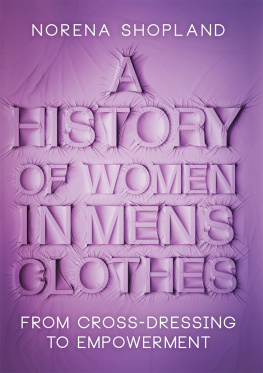

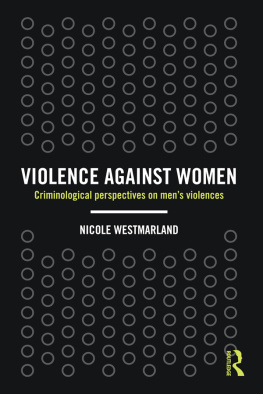
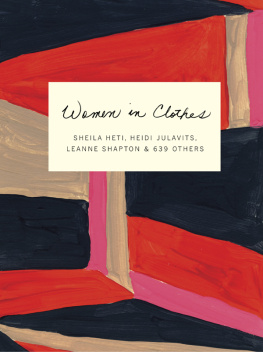
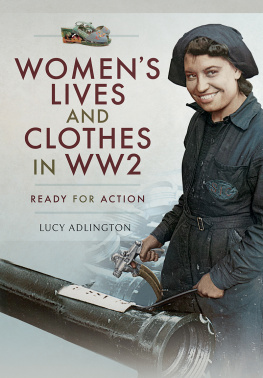

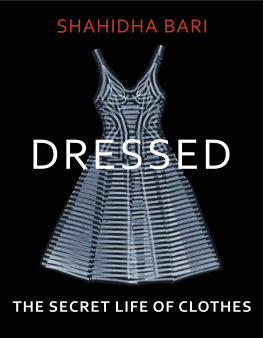
![Chloe Caldwell [Chloe Caldwell] - Women](/uploads/posts/book/114454/thumbs/chloe-caldwell-chloe-caldwell-women.jpg)